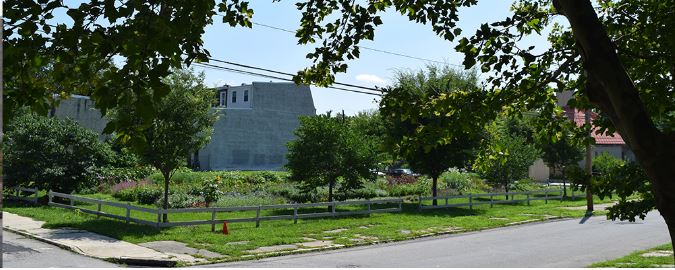Philadelphia, Pennsylvania became the largest U.S. city with a land bank in 2013 when the City Council, after intense negotiations, unanimously approved the redevelopment tool. Not surprising, since the city has some 43,000 vacant lots, and not enough affordable housing.
The Philadelphia Land Bank opened for business in 2015 with a clear mandate: to quicken the pace of returning vacant and tax delinquent property to productive use by centralizing ownership of these parcels and streamlining the redevelopment process. Not much happened for the first two years, so the land bank has just created a new (draft) strategic plan.
Only a small fraction of Philadelphia’s vacant parcels — 10 to 15 percent — are desirable to for-profit real estate developers, he says. The other 85 percent are small lots scattered across neighborhoods outside of the city’s dense core. “Even if you gave away the land for free, a builder couldn’t sell a home that covered the cost of development,” Gillen says, speaking in his capacity as a private citizen. “Those lots work best as small community gardens, side yards or open space until the neighborhood recovers.”
The high-value lots, on the other hand, should be used for “high density, multifamily mixed-used projects,” Gillen says. “To use the land bank to promote affordable housing is to bring the wrong tool to the wrong job.”
One study the researcher worked on for the Land Bank found that the agency could generate more revenue by selling the high-value lots to developers for market-rate housing than could be generated through the sheriff sales wherein tax-delinquent property is typically sold. Not only do properties fetch better prices through the Land Bank, but the agency’s requirement that they be developed in some form within a year of sale produces both more revenue and significant cost savings for the city. This cash could then go back to the city to fund public services and the Housing Trust Fund, a public-private partnership that assists homeowners, landlords and developers who want to build or maintain affordable properties.
“I’m all for what the advocates want,” he says. “But the best place to find this [affordable] housing is to renovate and retrofit existing housing. This would be the most cost-effective way to provide affordable and workforce housing at market rates in the city.”
Note from Storm: It’s a good thing that it’s still in draft form, because their strategic plan forgot to include a strategy. This gross oversight is, in fact, depressingly common.
Very few planners–in fact, very few people in general–actually know what a strategy is. In short, a strategy is a technique that simplifies, speeds, and helps secure the success of an effort. A strategy is a decision-making tool, and so should be short enough to commit to memory: just a sentence or three. Like so many “strategic plans”, the one recently submitted by the Philadelphia Land Bank confuses the strategic plan with the strategy itself. Thus, they have a 77-page “strategy”, which means they have no strategy at all.
The plan make several references to a strategy, such as an “acquisition strategy”, and they sometimes refer to specific tactics as a strategy (such as acquiring community gardens), but no strategy ever appears. Here are two representative sentences from the plan: “The Land Bank provides a strategy to address the blight and bring the land back to productive use, reducing public cost and increasing tax revenue.” and “The proposed Land Bank acquisition policy and strategy outlines a process by which low-income and affordable housing developers can seek assistance in assembling land for development.”
If your community’s strategic plan suffers a similar lack of strategy, you can quickly learn how to rectify the situation by reading this new Strategy Guide.
See full Next City article by Sandy Smith.

